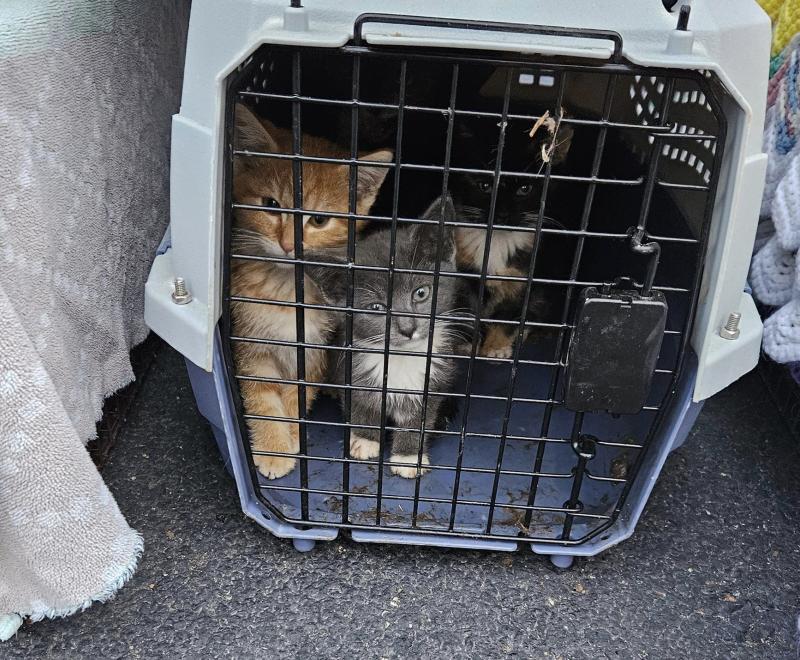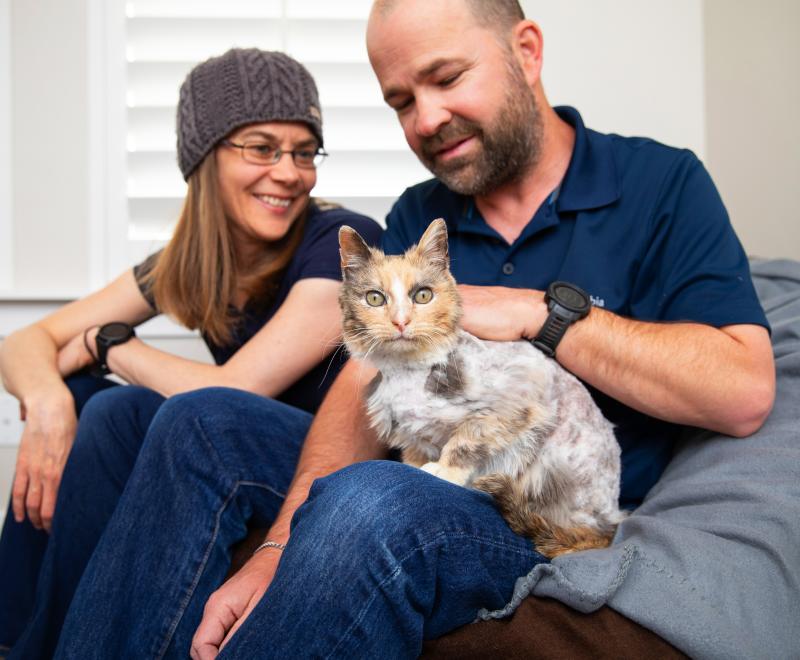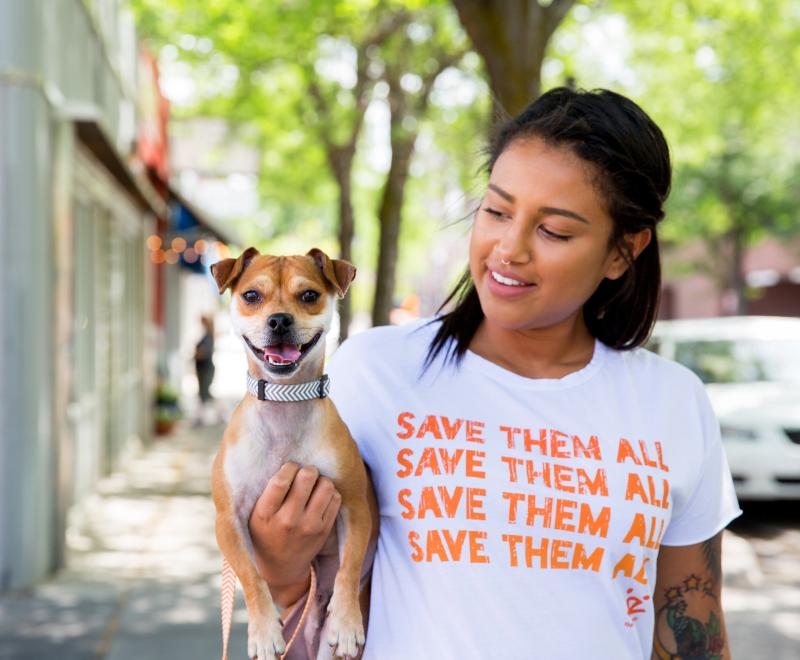Teaming up to revive an Illinois community cat program

Sometimes timing is everything.
After 11 years of veterinary practice in the small town of Mattoon, Illinois, Dr. Lisa Williams found herself searching for a way to rekindle the passion that first motivated her to pursue a career in animal welfare.
Julie Bennett, in her 29th year at the Coles County Animal Shelter (CCAS) in nearby Charleston, Illinois, was searching for a veterinarian to help her revive a community cat program that once showed much promise.
And Best Friends was willing to provide a $20,000 grant to help get the community cat program jump-started again.
The pieces were all in place.
[117 cats spayed or neutered in surgery marathon]
Julie remembers Coles County’s first attempt at trap-neuter-vaccinate-return in 2017 — that first night when she and a friend set out 25 traps. Ninety minutes later, they were stunned to discover that all the traps were full. “Right then we knew there was a tremendous need,” Julie says.
CCAS soon began humanely trapping and driving cats twice a month for spay/neuter surgeries at the University of Illinois. But in 2020 the program’s funding ended and the COVID-19 pandemic hit, pausing veterinary services for a while, and the fledgling program’s work ground to a halt.
Then last spring, when Julie sent out emails to local veterinarians asking for help reviving the program, she was delighted to get a call from Dr. Lisa. They met and produced a plan.
"Community cat programming is a crucial piece in lifesaving, and when the team at Coles County expressed a desire to have such a program in place, we were ready to help,” says Liz Stamper, Best Friends senior regional manager.
Best Friends’ goal is for all shelters to reach no-kill in 2025, and granting funds to shelters is one way we’re supporting their efforts.
Implementing Julie and Dr. Lisa’s plan would require a creative approach. Fortunately, the doc had already thought that one through.
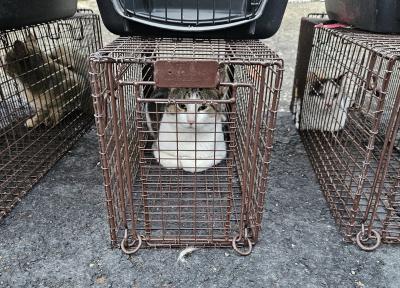
Taking spay/neuter on the road
Dr. Lisa’s idea was to build out a mobile spay/neuter trailer that could be hauled wherever it was needed in the county. The self-contained unit would have ample space to do multiple surgeries.
“The trailer — my husband gets all the credit for that,” she says. “He converted an older trailer formerly used for hauling. It has electricity and heat. We can haul everything we need. It’s outfitted for spay/neuter, and it’s perfect for our needs.”
Julie administers the program — maintains the contacts, sets up schedules, and does all the trapping. The cats are spayed or neutered, ear-tipped (so that they can be identified as having been sterilized), vaccinated, and returned to the same location where they were trapped.
If the spay/neuter event isn’t at the shelter, Julie brings the cats to a single location. “I have the easy part,” says Dr. Lisa. “I just show up and do the surgeries.”
Working together, Julie and Dr. Lisa have established a system that allows them to take the mobile unit into various communities and work in the most efficient way to maximize the number of cats they can spay or neuter in a single day.
Since its debut last July, the program, which reaches nine communities, has been more successful than either of them anticipated. “We’ve done spay and neuter surgeries on as many as 44 cats in one day,” says Dr. Lisa. “We’ve also done small groups of cats at people’s homes. In four months during the summer, we did surgery for 220 cats, and next year, we could double that amount.”
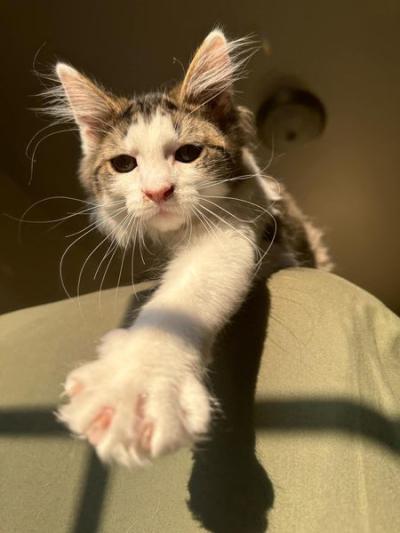
Changing people’s perceptions of cats
The mobile clinic is changing the way people think about animal services in Coles County. “Since Dr. Lisa has come in to help, it’s been a game changer,” says Liz. “She has helped the team see what is possible and has allowed them opportunities to help cats the shelter has not worked with before.”
The revived community cat program is a good example of how providing good information, along with a little financial help, can get a community up and moving on behalf of community cats. “Coles County has a small but mighty team, and we are working with them to identify the best way to sustain momentum,” says Liz.
Support from the community continues to grow, says Julie. “I can put a post on Facebook that we need canned food, and I immediately get donations. We have volunteers, some of them students, who come in to do community service hours.”
[A new kind of community to help community cats]
Julie still meets with families who aren’t sure what to do when cats show up in their yards. “When I sit down and explain how TNVR works, keeping new litters from being born and keeping the cats healthier, they listen,” she says. “It’s just a matter of me speaking with people and showing them new ways that are better all around for everybody.”
For Dr. Lisa, who last spring felt like she wanted to “feel that passion again” by helping more people at the grassroots level, it looks like mission accomplished.
“One trailer park we went to — it was the epitome of community cats,” she says excitedly. “The whole neighborhood knows their names, all 50 of them. They have a story for each one. They just love them all. When we were done, each person could not thank me enough. Really, I didn’t know what to say back to them.”
Maybe a simple “No, thank you” would do.
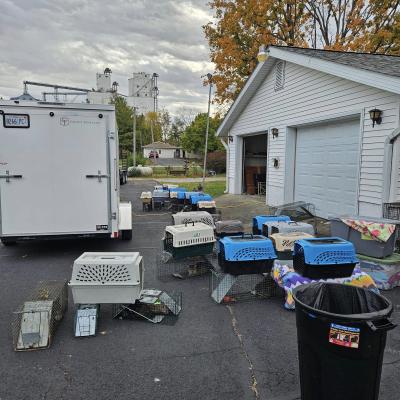
Let's make every shelter and every community no-kill in 2025
Our goal at Best Friends is to support all animal shelters in the U.S. in reaching no-kill in 2025. No-kill means saving every dog and cat in a shelter who can be saved, accounting for community safety and good quality of life for pets.
Shelter staff can’t do it alone. Saving animals in shelters is everyone’s responsibility, and it takes support and participation from the community. No-kill is possible when we work together thoughtfully, honestly, and collaboratively.
